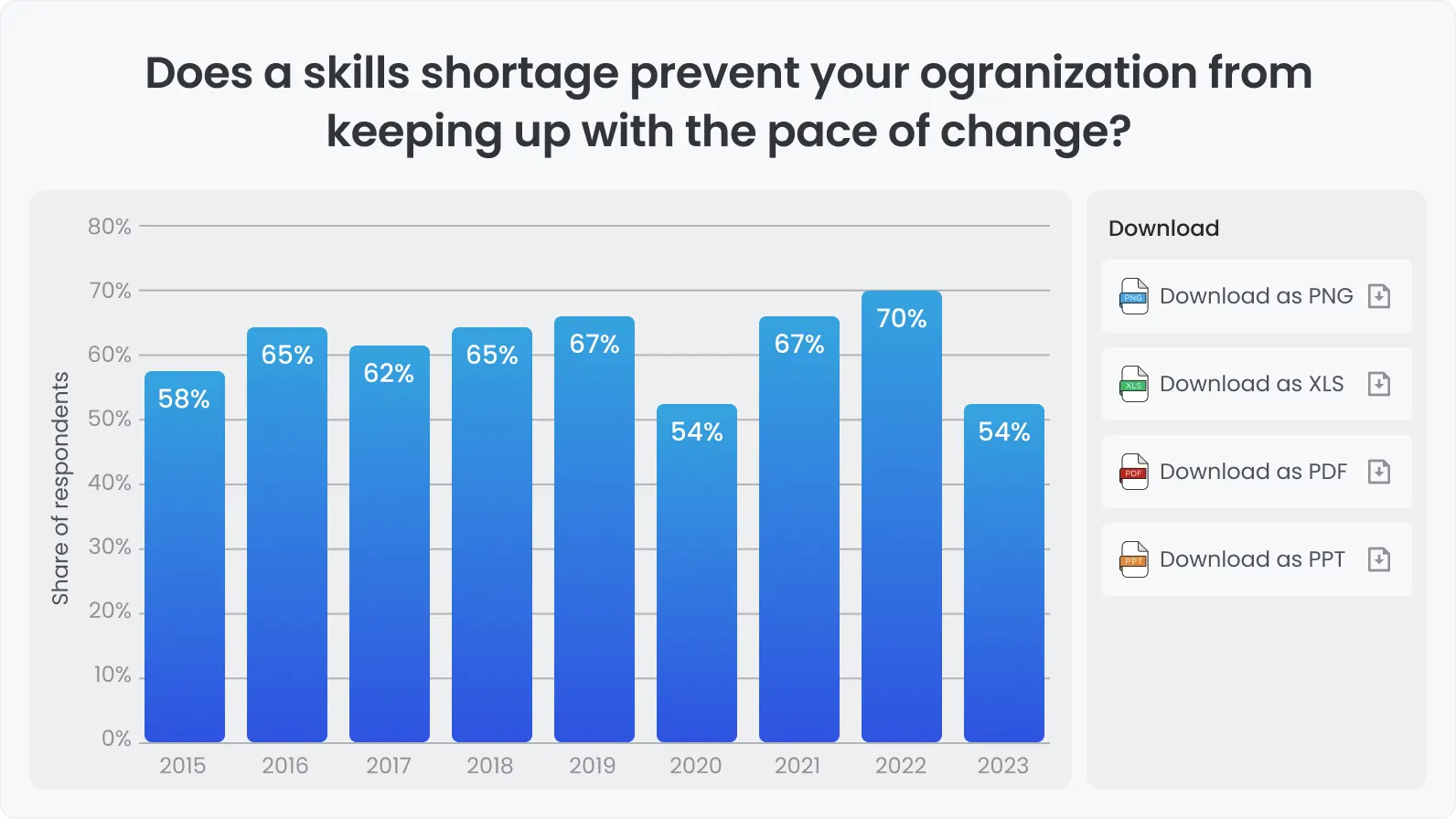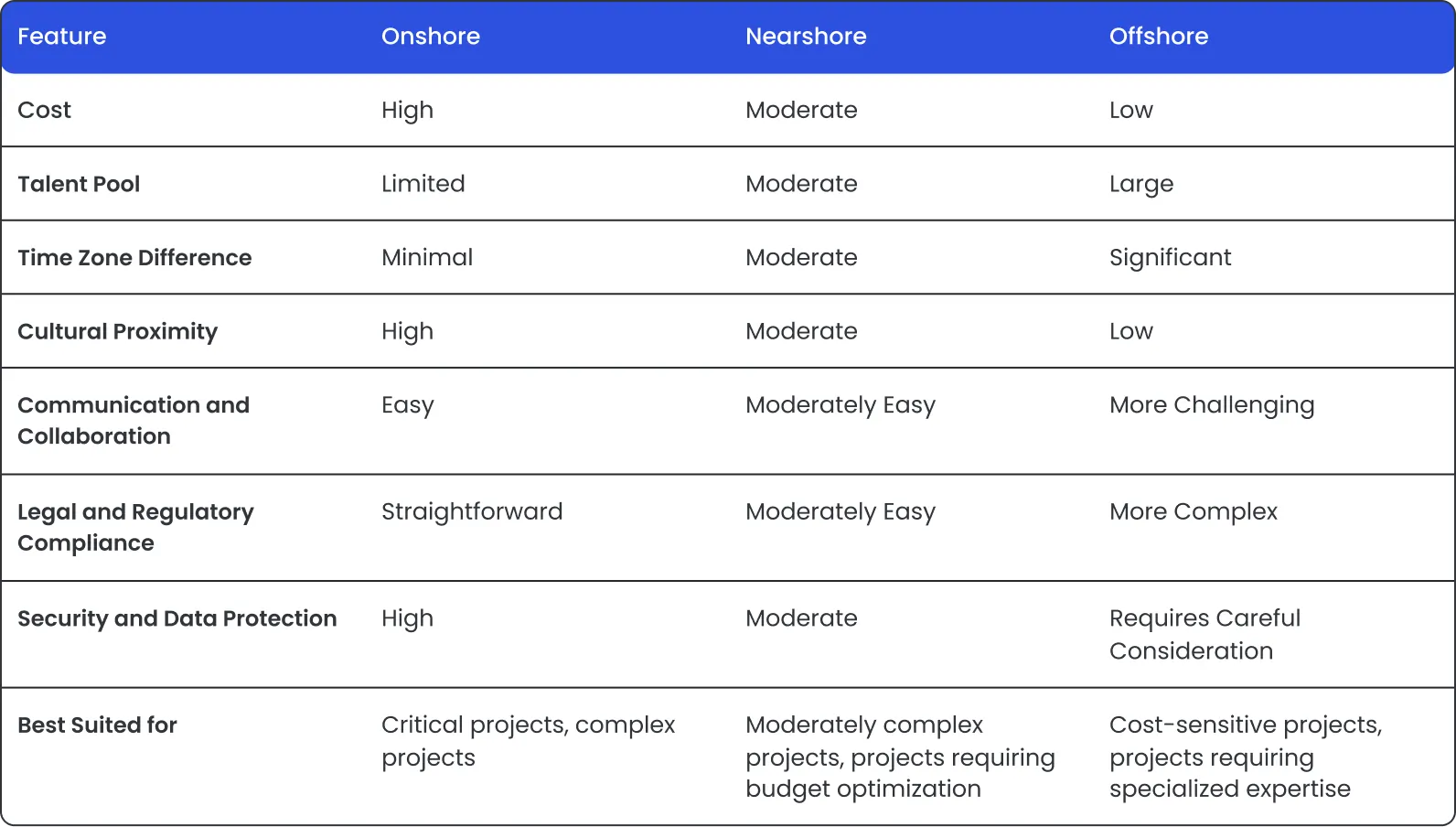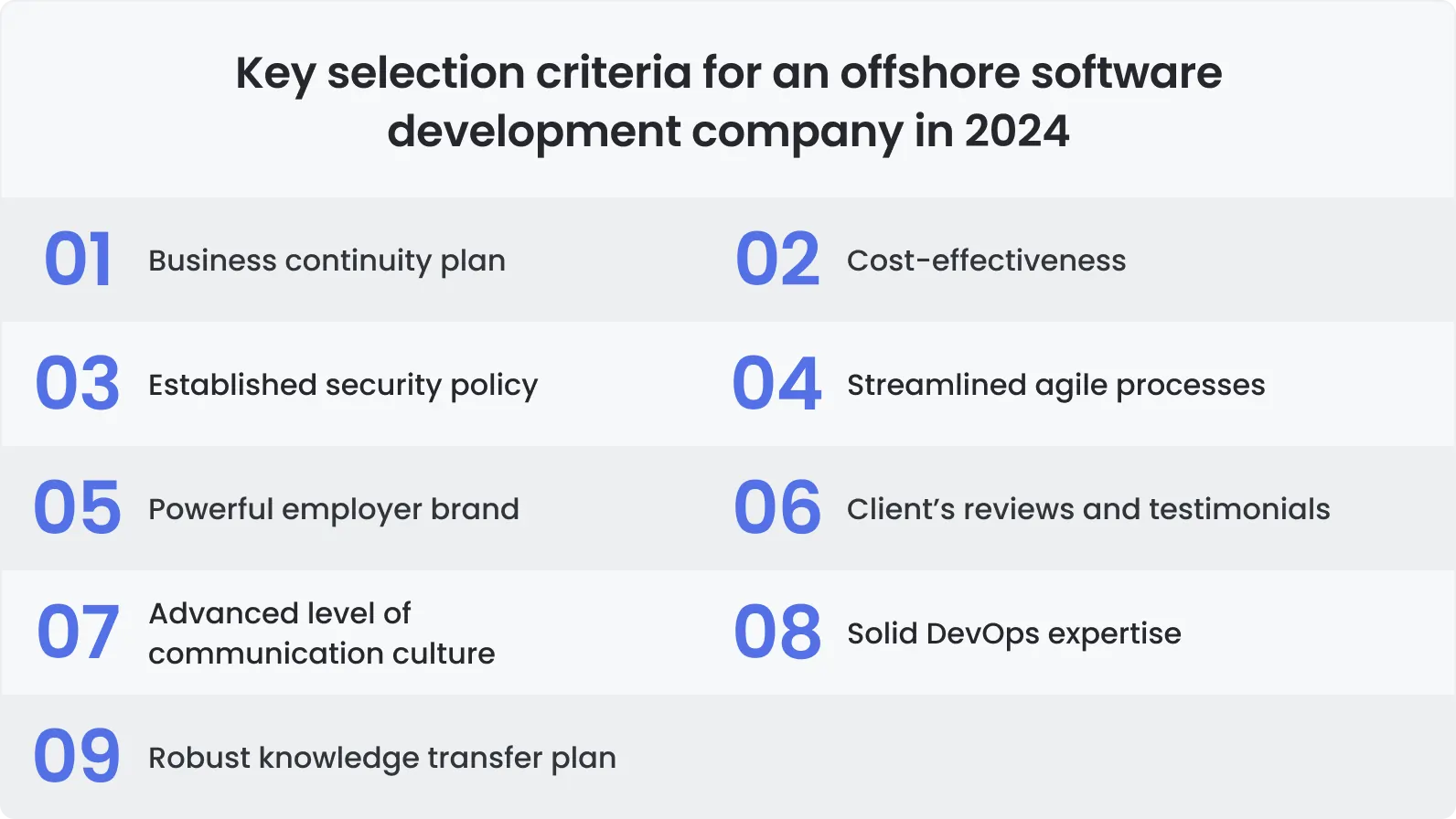Let’s get the ball rolling with a couple of juicy pieces of news. Statista states that, as of 2023, overall IT services revenue is about USD 1,241B. Not bad, right? But even more interesting is that IT outsourcing dominates in this market with almost a third (USD 460.1B).
But let's go back to the drawing board. Traditionally, software testing has been conducted in-house, with teams of testers working alongside developers to identify and rectify defects. Yet, in recent years, there has been a growing trend towards offshore software testing services. This involves outsourcing testing activities to a specialized provider located in a different country, often with lower labor costs and a wider pool of skilled testers.
According to Capgemini’s study, software testing offshore can save over 25% of the money companies usually spend on the on-side testing team.
In this article, we’ll take you to a helicopter to make your POV of offshore QA testing a helicopter view. We’ll explore the benefits, challenges, and best practices. You can skip to the most interesting part or read our other explanatory articles to get the full picture.
What is offshore software testing?
Outsourced offshore testing is the practice of outsourcing appropriate activities to a team or company located in a different country or region. Instead of having an in-house testing team, businesses choose to work with offshore partners to perform various software testing tasks, such as functional testing, performance testing, and regression testing.
There are several reasons why offshore software testing is beneficial for US and UK companies. First and foremost, it allows businesses to tap into a global talent pool of skilled testers who can offer a fresh perspective and bring diverse expertise to the table.
Tech company EPAM has surveyed over 900 senior technology and people leaders. And only 13% of them are satisfied with their current talent development and retention strategies. At the same time, Statista states that 54% of tech companies experience a tech talent shortage.

Additionally, offshore QA testing can significantly reduce costs, as labor rates in some countries may be lower compared to the company's home country.
How offshore software testing works
Offshore QA relies on solid communication and collaboration. Here’s a quick overview of the process:
Kickoff meeting: The client and provider align on project scope, goals, timelines, and communication. This usually involves a 1–2 hour video call with key team members from both sides.
Test plan creation: The provider drafts a test plan outlining the strategy, tools, and resources needed.
Test script development: Testers write detailed test scripts. Sometimes, client-side tech experts provide input here.
Test execution: Testers run the scripts, log bugs, and document results.
Defect management: Bugs are sent to the development team. After fixes, testers re-run tests to confirm issues are resolved.
Reporting: Regular updates and a final test report are shared with the client.
5 Reasons why you should choose offshore qa software testing
1. Delivering flawless software isn’t optional. It’s fundamental.
Let me be clear: delivering software with bugs is like handing your users a grenade with a pin halfway out. You wouldn’t do that. Not if you care about experience. Not if you care about trust.
Great products just work. But that only happens when you think differently about quality.
Offshore QA isn’t just a cost-saving tactic — it’s your guide through the maze. It’s how you move from chaos to clarity. From bugs to brilliance. Want excellence? Start with assurance.
2. Time is not just money — it’s your advantage.
Speed isn’t a luxury. It’s a competitive weapon. Every delay in testing delays your vision. Every slowdown puts distance between your product and your users.
Offshore QA teams operate while you sleep. Literally. When your day ends, theirs begins. That means testing never stops. Progress never pauses. And you get to market faster, smarter, better. Time doesn’t wait. Neither should you.
3. Profitability and precision - you can have both.
You don’t build a great company by cutting corners. You build it by investing smartly. Offshore QA doesn’t compromise quality — it enhances it.
The numbers back it up. Companies that go offshore cut costs and raise standards. Because efficiency isn’t about spending less. It’s about doing more — with less. Think of it this way: Every dollar saved on testing is a dollar earned for innovation.
4. Perspective changes everything.
Sometimes, we get too close to what we’re building. We stop seeing. Offshore QA gives you eyes you didn’t know you needed. Fresh thinking. Global insight. Different questions. Better answers.
And when you see your product from a new angle, it gets better. Sharper. Simpler. More human.
Innovation starts with perspective.
5. Productivity is a team sport.
You don’t need more hours in the day. You need better rhythm. Offshore QA turns your dev team into a 24-hour creation machine. It reduces bottlenecks. Clears blockers. Keeps momentum alive.
When QA isn’t a roadblock, your team gets to do what they do best: build. And that’s how you ship magic.
Onshore, nearshore, and offshore software testing: A comparative analysis
Deciding between onshore, nearshore, and offshore software testing is an old chestnut. Just because it brings significant ramifications for your project's success. Each approach offers unique advantages and drawbacks, requiring careful consideration of your specific needs and priorities.
Offshore, nearshore, and offshore: Comparison table

Onshore
Pros: Close proximity fosters seamless communication, collaboration, and cultural alignment. Familiarity with local regulations and legal frameworks simplifies compliance. In a nutshell, you get something like a tech buddy at your fingertips.
Cons: Higher labor costs can significantly impact project budgets. And you should consider that a limited talent pool may restrict access to specialized expertise. AI/ML, Blockchain, and other popular tech directions may be blocked for you.
Example: Imagine a leading healthcare company in the US choosing onshore testing for its critical medical software application. The close collaboration and clear communication facilitated by onshore testing ensured the highest quality standards and regulatory compliance. All that is thanks to an in-depth understanding of the local compliance issues and requirements.
Nearshore
Pros: Offers a balance between cost savings and cultural proximity. Reduces time zone differences compared to offshore options. For example, Latin America is a popular destination for US companies to outsource.
Cons: The talent pool may still be limited compared to offshore locations since similar regions have universities and tech schools that offer similar learning programs for students. By the way, costs also may remain slightly higher than offshore options.
Example: Think of a European fintech startup that opted for nearshore testing in Argentina. This choice provided access to highly qualified testers at a competitive cost, facilitating faster project completion and significant cost savings.
Offshore
Pros: With it, you get substantial cost savings due to lower labor costs in many offshore locations. Access to a vast global talent pool allows finding specialized expertise for complex projects.
Cons: Larger time zone differences can hinder communication and collaboration. Cultural differences require careful consideration and proactive communication strategies. Also, you need to consider English proficiency when choosing an offshore testing center.
Example: A renowned e-commerce platform in the UK partnered with an offshore testing team in Ukraine. This collaboration enabled them to scale their testing resources rapidly and reduce costs significantly, ultimately boosting their market competitiveness. Just because Ukrainian tech talents are not inferior in skill to American ones, but the cost of their work is significantly lower without harming quality.
Things to consider when hiring an offshore QA testing team
Right offshore software testing partner is akin to a gym buddy: if they’re not strong enough, you'll get crushed by a barbell on the bench press. They literally won't be able to spot you.

Similarly, you should understand that quality testing contributes to your reputation and financial confidence in the future. Take into account the following when choosing an offshore testing partner (it might repeat previously mentioned statements, but still important to be brought up again).
Expertise and experience: Assess the provider's experience in your specific industry and with similar projects. Look for a team with proven expertise in the testing methodologies and tools you require.
Communication and collaboration: Ensure the partner prioritizes clear and efficient communication. Discuss their preferred communication tools (Slack, Microsoft collaboration tools, etc.) and processes to ensure seamless collaboration throughout the project.
Security and compliance: Verify the provider's adherence to industry-standard security practices and relevant data protection regulations. You can have a chat with their previous clients and figure out if this collaboration is worth trying.
Cost and pricing model: Don’t stop off at one choice. Compare pricing models offered by different providers and ensure they align with your budget and project needs.
How to ensure good cooperation
Ensuring good collaboration in offshore software testing is like a symphony, requiring teamwork and adherence to best practices. Establishing clear communication channels, using collaboration tools such as Slack and Jira, and establishing a culture of transparency support harmonious collaboration.
Another statistic that bears witness to the importance of clear collaboration is ComScore findings: the use of online collaboration platforms increased by 322% from May 2019 to May 2020.
Building a strong relationship with your offshore QA testing team is essential for achieving optimal results.
Which practices should you follow?
Establish clear expectations and communication protocols: Define clear roles, responsibilities, and communication protocols early in the project to prevent misunderstandings and delays.
Schedule regular meetings and updates: Foster open communication by scheduling regular meetings, calls, and status updates to keep the team aligned and informed.
Embrace transparency and collaboration: Encourage transparency and collaboration by sharing relevant information, readily addressing concerns, and creating a culture of open dialogue.
Invest in building relationships: Invest in building personal relationships with your offshore team members. Regular interactions and cultural awareness initiatives can foster trust and understanding, leading to a more productive working environment.
To sum it up
Offshore software testing provides numerous leg-ups for businesses. Some of them are cost savings, access to a global talent pool, and scalability. Yet, choosing the right approach and partner requires thinking through factors like expertise, communication, and security.
As software development becomes increasingly complex and globalized, the role of offshore software testing will continue to grow. With the right strategy and execution, businesses can leverage this powerful approach to achieve higher quality software, faster time-to-market, and improved cost-efficiency.
To ensure success with offshore software testing, invest in building strong relationships with your testing team, prioritize clear communication and collaboration, and embrace continuous learning and improvement.
This way, you’ll be rest assured that your software won’t harm your clients and, thus, your reputation.
